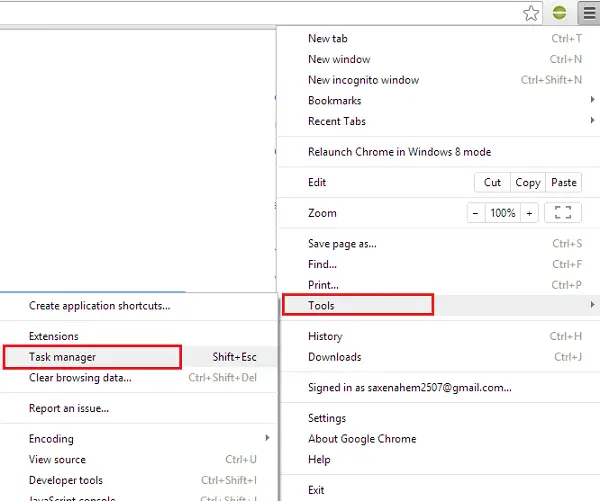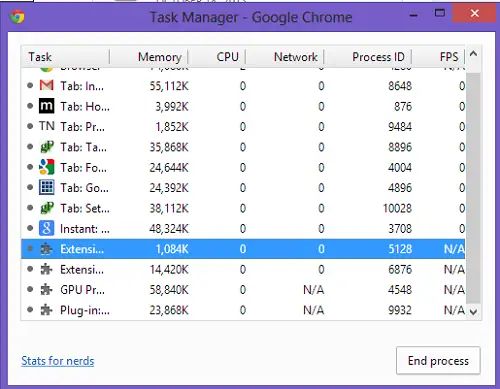I fail to recall the number of extensions I download and use to make my work easier and often forget to disable them, after use. As a result of this laxity, I realize, these extensions have slowed down the performance of my Chrome leaving me with no choice but to remove them in annoyance. Now, the work has become easy with the introduction of Chrome Task Manager.
Yes, Google Chrome has introduced a task manager for the web browser that can help you track down power-hungry/resource-hogging extensions in seconds and disable them. Chrome claims it uses what is known as “multiple processes architecture” that makes it possible for the browser to maintain its overall responsiveness.
Find & Disable Power-Hungry Extensions in Chrome
For instance, when you’re browsing a site, Chrome uses a renderer or a rendering engine to process the site’s code to display properly. As the renderers become more complex over time, it can occasionally cause the page to crash. By separating these processes from each other Chrome maintains the responsiveness. So, if you are experiencing issues in one tab, it shouldn’t affect the performance of other tabs or the overall responsiveness of the browser.
Chrome Task Manager
- Click the Chrome menu on the browser toolbar.
- Select Tools. If you’re using a Chromebook, select More tools instead.
- Select the Task Manager.

In the dialog that appears, select the process you want to close. You’ll find five types of processes listed:
- Browser
- Renderers
- Plug-ins
- Extensions
- GPU (Graphics Processing Unit)

If you would like to add more categories to see the stats of particular extensions, right-click anywhere in Chrome Task Manager, then check the category you want to be listed the next time you run it. I chose ‘Profile’, here.

In all, Chrome Task Manager allows you to pick up extensions that are using system resources. It is advisable to disable these extensions if you do not use them often.
Try out Chrome Task Manager and let us know if you experience the difference.
Thank you so much for this tip! Even works in Comodo’s Chrome-based “Dragon” browser; really easy to see power-muncher exts, and I was surprised at how much a few of mine eat up! Thanks again!
Thank you! Chrome was freezing when I opened new tabs. This fixed it! Shockwave plugin was the problem.